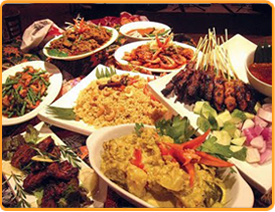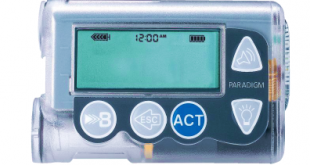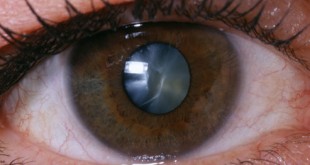Can My Favourite Foods Cause Diabetes?
When you are newly diagnosed with diabetes, you may feel that you have to give up all your favourite foods. Foods do not cause your diabetes directly, in fact there are also some other risk-factors involved. But, it is important to know that everything you eat has an effect on your blood sugar. And mainly, eating excessive amounts of sugar can cause hyperglycemia – a leading cause of diabetes complications.
People with diabetes may continue eating their favorite food by converting them into healthy eating choice such as :
- Changing the way your favorite foods are prepared – baking or grilling instead of deep frying.
- Changing the other foods you usually eat along with your favorite foods – whole grain buns with lots of salads for burgers.
- Reducing the serving sizes of your favorite foods – half portion of beriani rice set meals.
- Using your favourite foods as a reward for following your meal plans.
By adapting and learning to eat regular meals, controlling the amount you eat, and making healthy food choices can help you manage your diabetes better and prevent other health problems.
Moderation is the Key
The word moderation means within reasonable limits or avoiding extremes. “Eating in moderation” means eating healthy foods in the recommended amounts for your weight and activity level. If you have diabetes, you can eat almost any foods, as long as you do it in moderation and control your serving size and carbohydrate intake. In addition, keeping your weight in the healthy range can help you improve your blood-sugar control.
Learning to eat in moderation also involves emotional feelings while adapting to the new different ways in eating the favourite foods that you tend to overeat. For example, a person newly diagnosed with diabetes who used to drink coffee and take two half boiled eggs every morning for 40 years, it will most likely involve uncomfortable feelings, especially at first, as you are getting used to not going for more. In other words, your brain is still saying “more” while your behaviour is now saying “no more”. The learning process will most likely involve episodes where you are not successful, or not as successful as you would like, in eating less and stopping. It will take some time until you finally change with the hard efforts.
Choosing a healthy and balanced diet is very important in your diabetes treatment plan. This will help to meet all of the body’s requirements. Try to eat a variety of different foods. Enjoy your favourite foods, but eat less and avoid oversized portions. By understanding the healthy diet concept for diabetes, just watch portion sizes and be sure 1/2 your plate is filled with fruits and vegetables, ¼ starch, and ¼ protein. Remember to eat mostly plant foods, cut-back on refined carbohydrates and sugary beverages and choose healthy fats. As long as you choose your carbohydrates wisely, watch your portion sizes and keep regular meal and snack times, you will be in control of your diabetes and your health.
The Right Amount at The Right Time
People with diabetes can continue having most of their favorite food but, portion sizes and timing of meals and snacks need to be planned well throughout the day. The objective is to avoid taking too much carbohydrate and also calories in one sitting. As you know, controlling your glucose levels and weight is essential to your good health.
There are certain foods that have carbohydrate, which is the portion of food that turns to glucose, or fuel for your body. Many people think that they should stop foods with carbohydrate after being diagnosed with diabetes. This is not true. Eating too much carbohydrate at one time can cause your blood glucose to become too high; not eating enough can cause your blood glucose to become too low or leave your body without the fuel it needs.
The key to a good meal-planning is to distribute carbohydrate and calories evenly throughout the day into healthy meals. By understanding this concept, people with diabetes may eat almost any food they like. A dietitian can help to determine the right amount of calories and carbohydrates for you and review the meal schedule to fix them in. With a little help in the beginning, you can plan your own meals later and you won’t have to eat the same meals day after day.
You may also wonder whether a beverage is safe for diabetes. People with diabetes may not have to make drastic changes to what you are drinking at present, but you should reduce and eliminate high-sugar beverages from your diet. For example, if you like to drink carbonated drinks, try to avoid them and replace with other options of beverages. You can always enjoy low-fat milk, natural fruit and vegetable juice, water, coffee and tea when you have diabetes. However, you are not advisable to use sugar to sweeten them instead, use an artificial sweetener.
Foods To Avoid
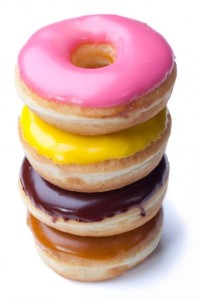 Photo Source: iStockphoto/Dean Turner
Photo Source: iStockphoto/Dean Turner
- Foods with added sugar
The purpose of adding sugar in foods is to add flavour, texture and shelf-life. However, it provides very few nutrients and if it is consumed alone or in large amounts, it will give rise to our blood sugar. If people with diabetes feel like eating sugar, incorporate them in minimum amount into a nutritious meal especially a fibre containing meal. Examples of sugar are brown sugar, sugar cane, or just simple sugar. Also, it may be in the form of “syrup”, example, corn syrup, high-fructose corn syrup, maple syrup and glucose syrup. And sometimes, it may be in the word that end in “–ose”, like sucrose, glucose, lactose and fructose.
- Refined grains
Refined grain is derived from whole grains after a refining process. The content of all valuable fibre, vitamins, minerals, antioxidants and protein has decreased. In fact, it may become a higher-glycaemic food which will rapidly increase blood glucose level. Examples of refined grains are enriched breads, pasta, cereals or instant rice.
- Dried / canned fruits and juices
People with diabetes should avoid canned fruits, dried fruits and fruit juices. This is because they have more calories and sugar per serving than whole fruits. In addition, fruit juices also contain very little, if any, fibre. In fact, the heavy syrup canned fruit and sugar-coated dried fruits in particular, contain more sugar and calories.
- Fatty meats
Excess consumption of red, fried and processed meats can increase your cholesterol and risk for heart disease because they are high in saturated fat. When you do consume red meat, choose the leanest cuts and stick to modest portion sizes. People with diabetes can choose cooking oil from fish and plant sources, such as nuts, seeds and olive oil, which promote heart health and provide essential nutrients, such as vitamin E and omega-3 fatty acids. Another alternative to reduce intake of saturated fat is to replace meat once a while with vegetable proteins such as toufu and tempeh.
Keys To Healthy Eating Out
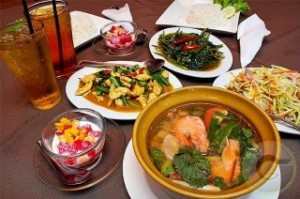 Photo Source: Maa Roy Thai Seafood Restaurant
Photo Source: Maa Roy Thai Seafood Restaurant
Oversize portions, unknown ingredients and tempting menu items can make restaurant dining challenging for people with diabetes. The biggest challenge to eating out for people with diabetes is to find and make a healthy food choice. Here are some tips on how to stay within your healthy eating plan while eating out :
| Plan ahead | · Select a restaurant that offers low-fat, low-calorie choices
· Eat less during other meals when you have eating out plan in the day · Eat a small, healthy meal such as vegetable soup or drink a large calorie-free drink before you go out · Plan what to order before you get to the restaurant, and order without looking at the menu |
| Ask for what you want | · Ask for low-fat, low-calorie foods
· Ask if foods can be cooked in a different way such as reduce oil, no seasoning · Do not be afraid to ask for foods that are not on the menu · Ask how large the serving size is, try to order smaller size · Split a main dish or dessert with someone · Order salad dressing, gravy, sauces, or spreads on the side |
| Take charge of what’s around you | · Choose a restaurant with low-fat options
· Going with people who support your lifestyle · Remove the things that get in the way or tempt you · Be the first to order · Keep foods off the table that you do not want to eat · Ask the server to remove your plate as soon as you finish |
| Choose food carefully | · Stay focused on your healthy eating goals
· When possible : o Choose healthier starches o Pair starches with lean protein sources o Ask for steamed, baked or grilled foods rather than fried o Request or choose minimum size portion o Choose beverages unlikely to offset your blood sugar such as plain water, unsweetened iced tea and low-fat milk |
References
- August M (2011, May 26). Diabetes and Food Problems. Message posted to http://www.livestrong.com/
- August M (2011, May 12). Foods That Diabetics Cannot Eat. Message posted to http://www.livestrong.com/
- Centers of Disease Control and Prevention. National Diabetes Prevention Program: Session 10 – Four Keys to Healthy Eating Out. Retrieved on October 12, 2012 http://www.cdc.gov
- Elizabeth M (2012, August 13). You can eat your favourite foods if you have diabetes. Message posted to http:// www.lancastergeneralhealth.org
| Last reviewed | : | 03 December 2013 |
| Writer | : | Pn. Hjh. Salha binti Mohamed Nor |
| Accreditor | : | Pn. Viola Michael |
 PENDIDIKAN PESAKIT Kementerian Kesihatan Malaysia
PENDIDIKAN PESAKIT Kementerian Kesihatan Malaysia
